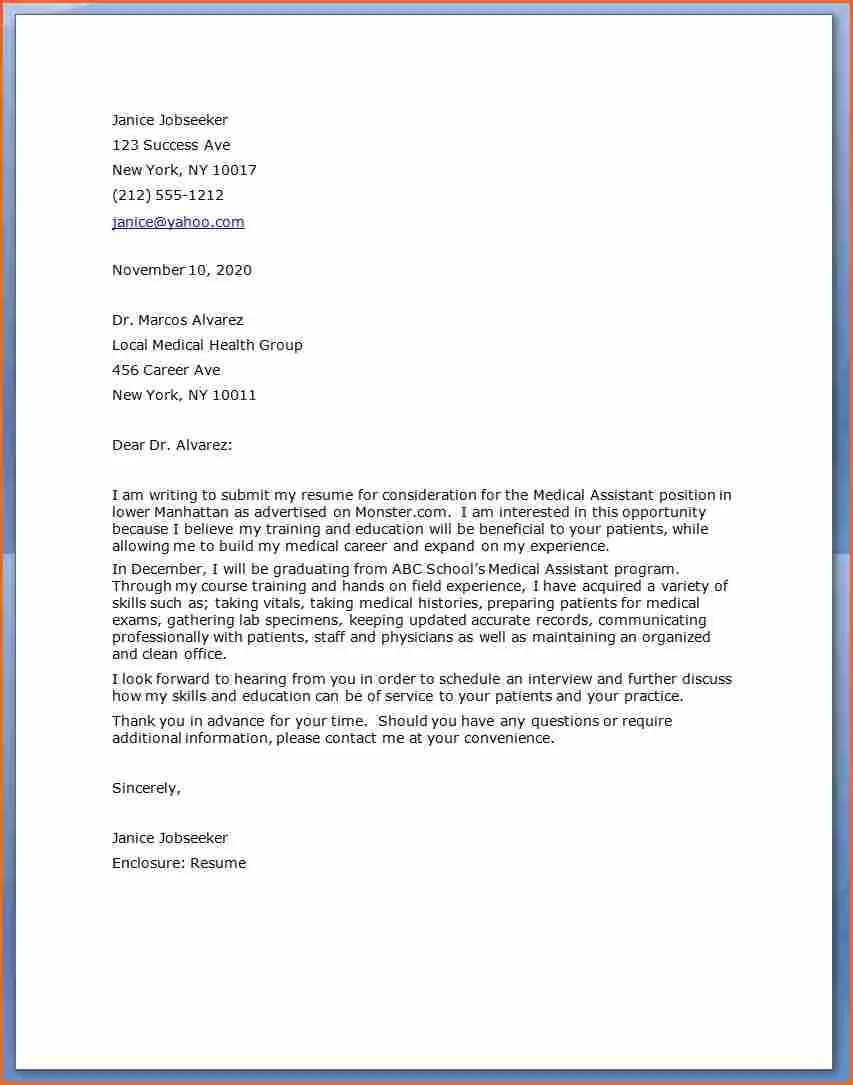Understanding the Medical Cover Letter
A medical cover letter is more than just a formality; it is your first opportunity to make a strong impression on potential employers in the healthcare field. Unlike a resume, which provides a factual overview of your skills and experience, a cover letter allows you to connect with the hiring manager on a personal level. It offers a chance to showcase your personality, express your enthusiasm for the specific role, and explain why you are the ideal candidate. A well-crafted cover letter can significantly increase your chances of getting an interview and landing your dream job in medicine. It’s your personal sales pitch, highlighting what makes you unique and qualified.
Purpose and Importance
The primary purpose of a medical cover letter is to introduce yourself, express your interest in a specific position, and persuade the hiring manager to consider your application. It serves as a bridge between your resume and the employer’s needs. The importance lies in its ability to differentiate you from other applicants. In a competitive field like healthcare, a well-written cover letter demonstrates your attention to detail, communication skills, and genuine interest in the opportunity. It provides context to your resume, allowing you to explain gaps in employment, highlight relevant experiences, and tailor your qualifications to the specific job requirements.
Key Components of a Cover Letter
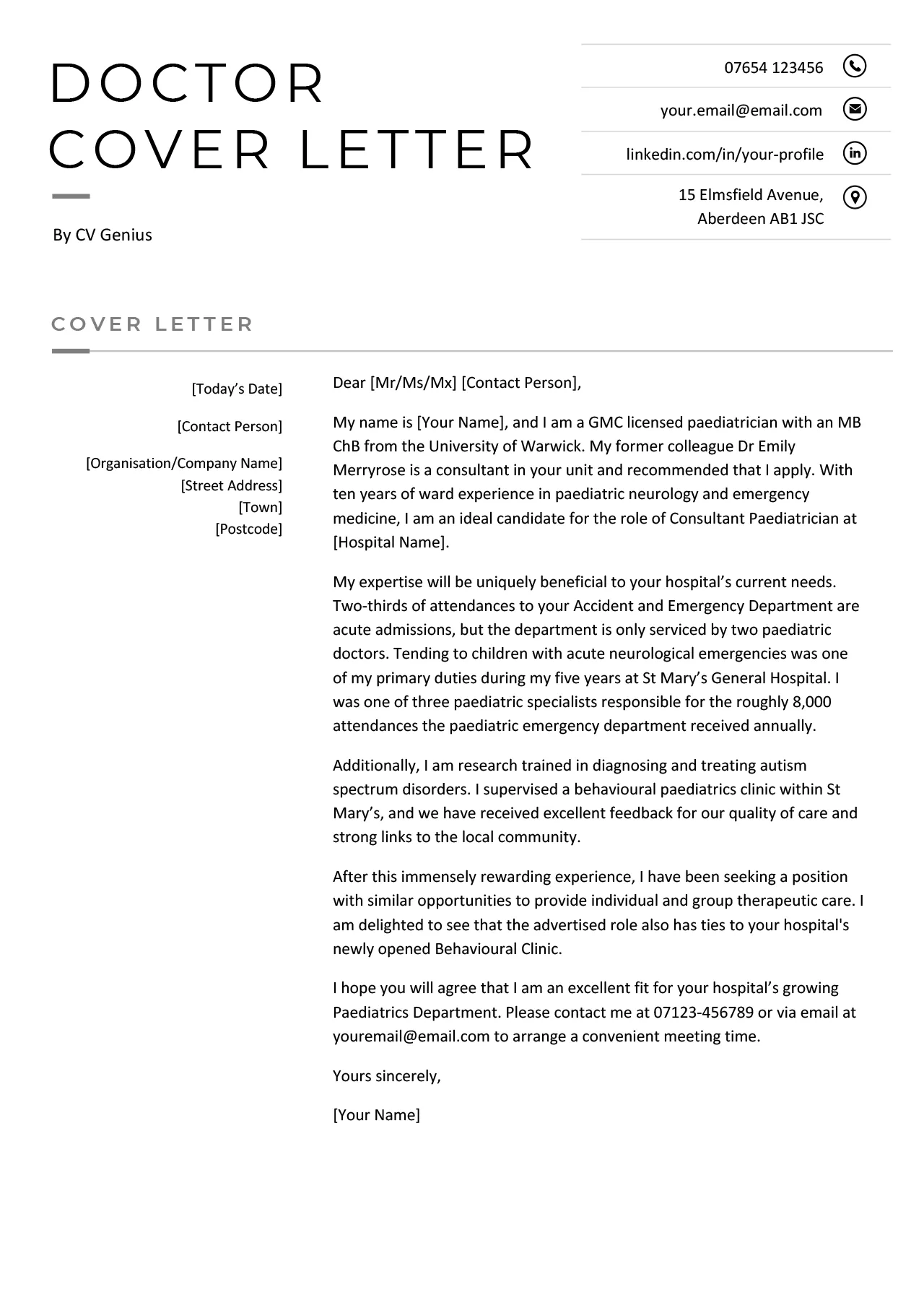
A strong medical cover letter should include several key components. First, a compelling introduction that immediately grabs the reader’s attention. Next, a body that highlights your relevant skills, experience, and achievements, using specific examples to illustrate your capabilities. Then, a section demonstrating your enthusiasm for the role and the organization. Finally, a professional closing that expresses gratitude and a clear call to action, such as requesting an interview. Each part must work together cohesively to paint a picture of you as the ideal candidate.
Formatting Your Medical Cover Letter
Proper formatting is crucial for a medical cover letter. It ensures readability and professionalism, reflecting your attention to detail. The overall layout should be clean and easy to navigate. Use a standard font like Times New Roman or Arial in a readable size (11 or 12 points). Maintain consistent margins (1 inch on all sides) and use single spacing for the body of the letter, with a space between paragraphs. Ensure your formatting is consistent throughout the document to project a polished image.
Header Essentials
The header of your cover letter sets the stage. Begin with your contact information (name, address, phone number, and email address) aligned to the left. Use a professional email address. If the job application is done online, make sure to use a common file format like .pdf. Next, on the right side, include the date and the recipient’s information (name, title, and the organization’s address). This ensures that the hiring manager knows that this letter has been specifically tailored for them.
Contact Information

Your contact information should be easy to find. It should be the first thing the hiring manager sees. Include your full name, professional-looking email address, and a phone number where you can be easily reached. Double-check this information to ensure it is accurate and up-to-date. A mistake here could mean missing out on a job opportunity.
Date and Recipient Details
Below your contact information, include the date you are sending the letter. Following the date, address the letter to the hiring manager by name if possible. If the name is unavailable, use a professional title like ‘Hiring Manager’. Then include the recipient’s title and the organization’s address. This demonstrates that you’ve researched the position and taken the time to tailor your application.
Body of Your Cover Letter
The body of your medical cover letter is where you showcase your skills, experience, and passion. Structure it strategically to capture the reader’s attention and highlight your qualifications. This section should consist of several paragraphs, each serving a specific purpose. The introduction should grab attention, the main body should highlight relevant experiences, and the closing should express gratitude and a call to action. The body of the letter provides you with the opportunity to explain why you are the best fit for the role.
The Introduction

Your introduction is the first impression, and it should immediately grab the hiring manager’s attention. Start with a strong opening statement that expresses your interest in the position. You can mention where you saw the job posting, briefly highlight your key qualifications, or state your enthusiasm for the opportunity. It sets the tone for the rest of the letter. Avoid generic openings and strive to make it engaging and tailored to the specific role.
Grabbing Attention
To grab the hiring manager’s attention, start with a compelling opening. You could mention a specific achievement, express your genuine interest in the organization, or state why you are excited about the opportunity. Avoid generic statements. Show your knowledge of the organization, the role, and the healthcare industry. Briefly state your most relevant qualifications. The introduction sets the tone for your letter and should entice the reader to continue.
Highlighting Your Skills and Experience
In the body of your letter, highlight the skills and experience most relevant to the job description. Focus on how your qualifications align with the employer’s needs. Provide specific examples to illustrate your abilities. Use action verbs to describe your accomplishments and responsibilities. Avoid simply listing your skills; instead, demonstrate how you’ve used them to achieve results. This section should provide specific and supporting details of how you are a good fit.
Showcasing Relevant Experience
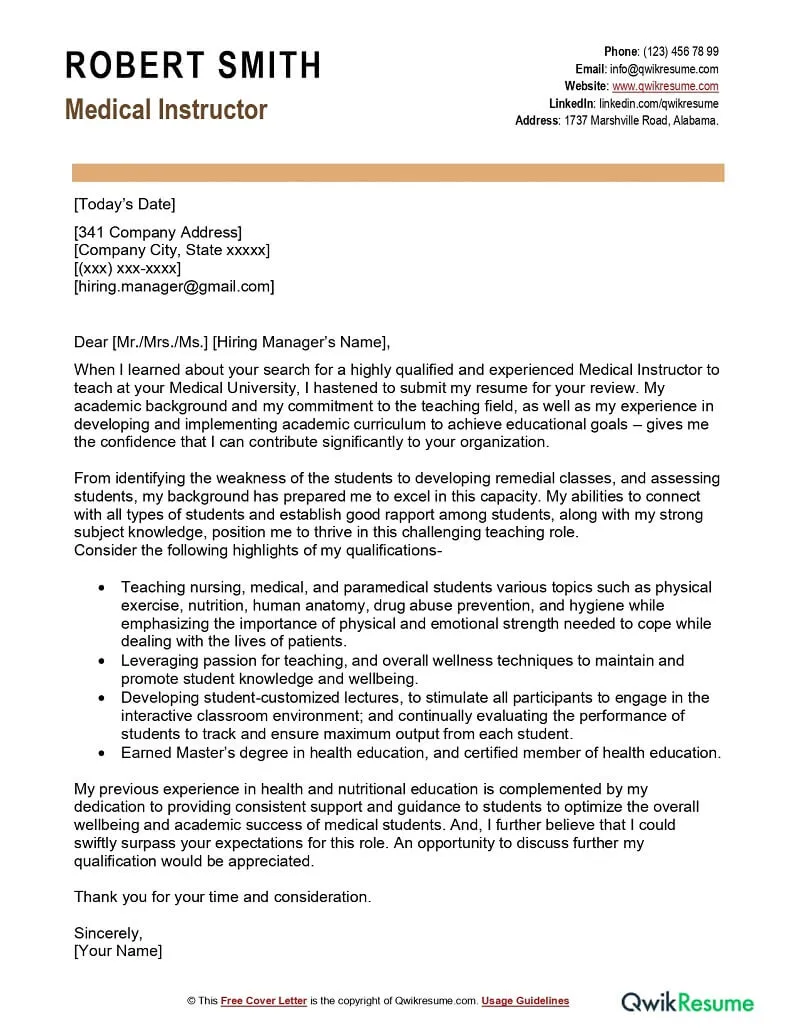
When showcasing your experience, select the most relevant experiences and tailor them to the job description. Explain your roles and responsibilities, and highlight your accomplishments. Mention any specific projects or initiatives you led or participated in. Quantify your achievements whenever possible. Emphasize the skills you gained and how they relate to the requirements of the position. Ensure you clearly link your past experiences to the job’s needs.
Quantifying Your Achievements
Quantifying your achievements is an effective way to demonstrate your impact. Instead of simply stating that you ‘improved patient care,’ provide specific numbers. For instance, mention ‘increased patient satisfaction scores by 15%’ or ‘reduced medication errors by 10%’. Use metrics, data, and statistics to support your claims. Quantifying your achievements makes them more credible and shows your ability to deliver results, helping you stand out from other candidates.
Demonstrating Your Passion and Fit
Demonstrate your passion for the medical field and your genuine interest in the specific role and organization. Explain why this opportunity excites you. Share your career goals and how this position aligns with them. Show that you have researched the organization and understand its mission, values, and culture. This section is your chance to show the hiring manager that you’re not just looking for a job, but you are enthusiastic about the opportunity.
Expressing Enthusiasm
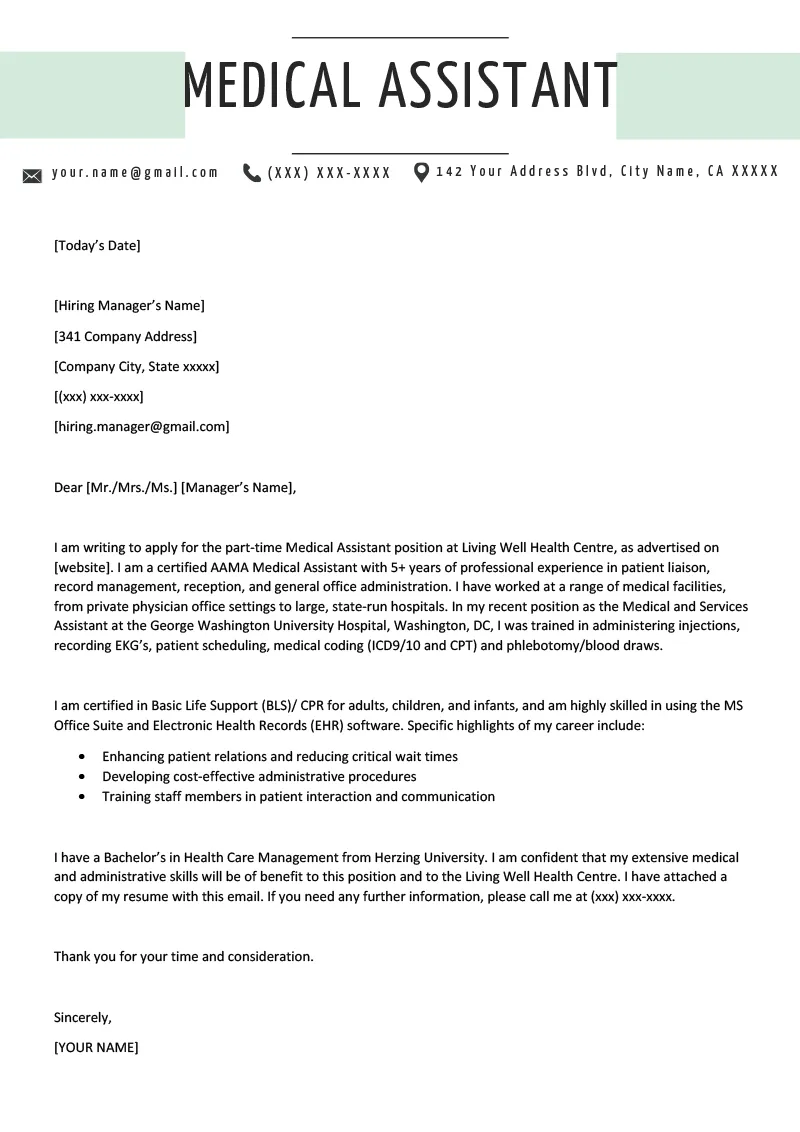
Express your enthusiasm by describing why you’re excited about this opportunity. Mention any specific aspects of the role that you find appealing or any of the organization’s initiatives that resonate with you. Show genuine interest in the company’s work and culture. Connect your personal and professional aspirations with the goals of the organization. This enthusiasm helps show you are a great cultural fit.
Researching the Organization
Before writing your cover letter, research the organization. Visit their website, read about their mission, values, and recent achievements. Understand their current projects and initiatives. Mentioning specific details shows that you’ve taken the time to learn about the organization and that you are genuinely interested in joining their team. Tailoring your letter based on your research will highlight your interest.
The Closing
The closing of your medical cover letter is your final opportunity to leave a positive impression. Express your gratitude for the hiring manager’s time and consideration. Reiterate your interest in the position, and include a clear call to action. Make it easy for the hiring manager to take the next step, and reiterate your excitement and qualifications.
Expressing Gratitude
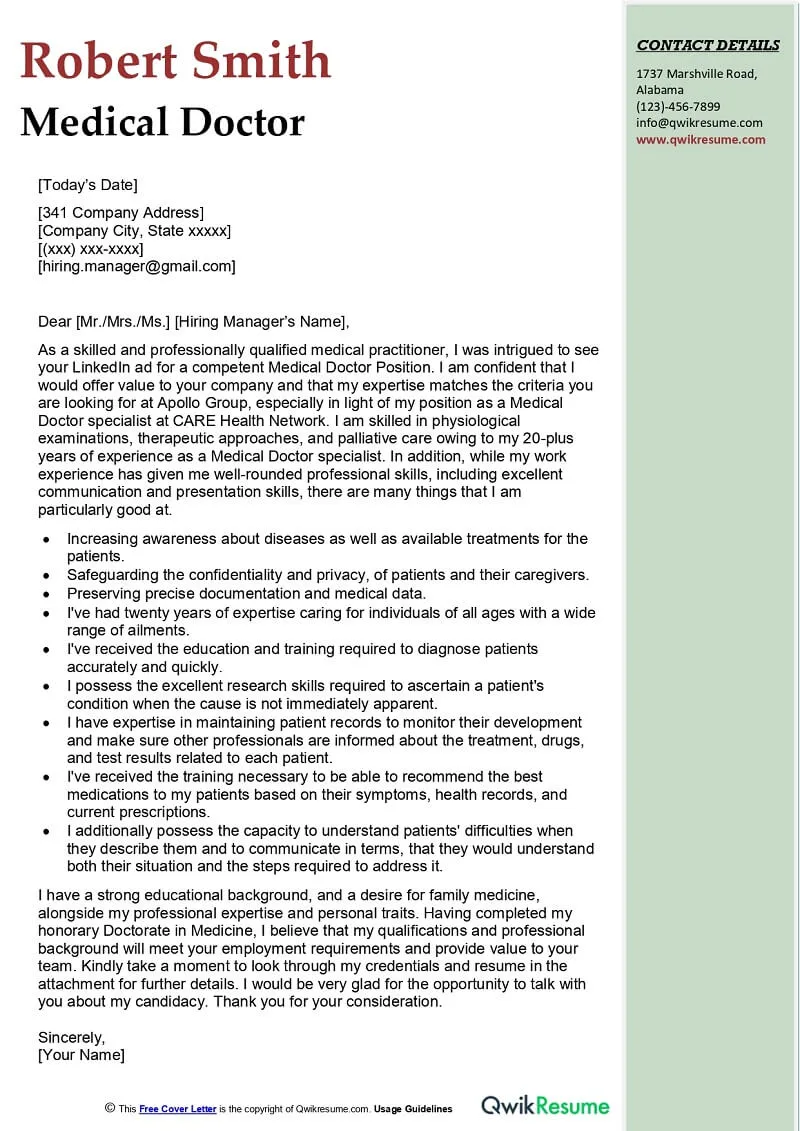
Express your gratitude for the hiring manager’s time and consideration. Thank them for reviewing your application. Make sure to show professionalism and sincerity. This reflects well on your communication skills and your appreciation for the opportunity.
Call to Action
Include a clear call to action. Request an interview and suggest your availability. Make it easy for the hiring manager to move forward with your application. Mention your eagerness to discuss your qualifications further and how you can contribute to the organization. Make your request polite and professional. End with a professional closing such as ‘Sincerely’ or ‘Respectfully’.
Proofreading and Editing
Proofreading and editing are essential steps in the cover letter writing process. Errors can undermine your credibility and professionalism. Thoroughly review your cover letter for any grammatical errors, spelling mistakes, and punctuation issues. Read the letter aloud to catch awkward phrasing or unclear sentences. Ask a friend, family member, or career counselor to review your cover letter for a second opinion. Ensure the language is professional, and the formatting is consistent. It’s always better to be overly cautious, as even small mistakes can have a negative impact.
Common Mistakes to Avoid
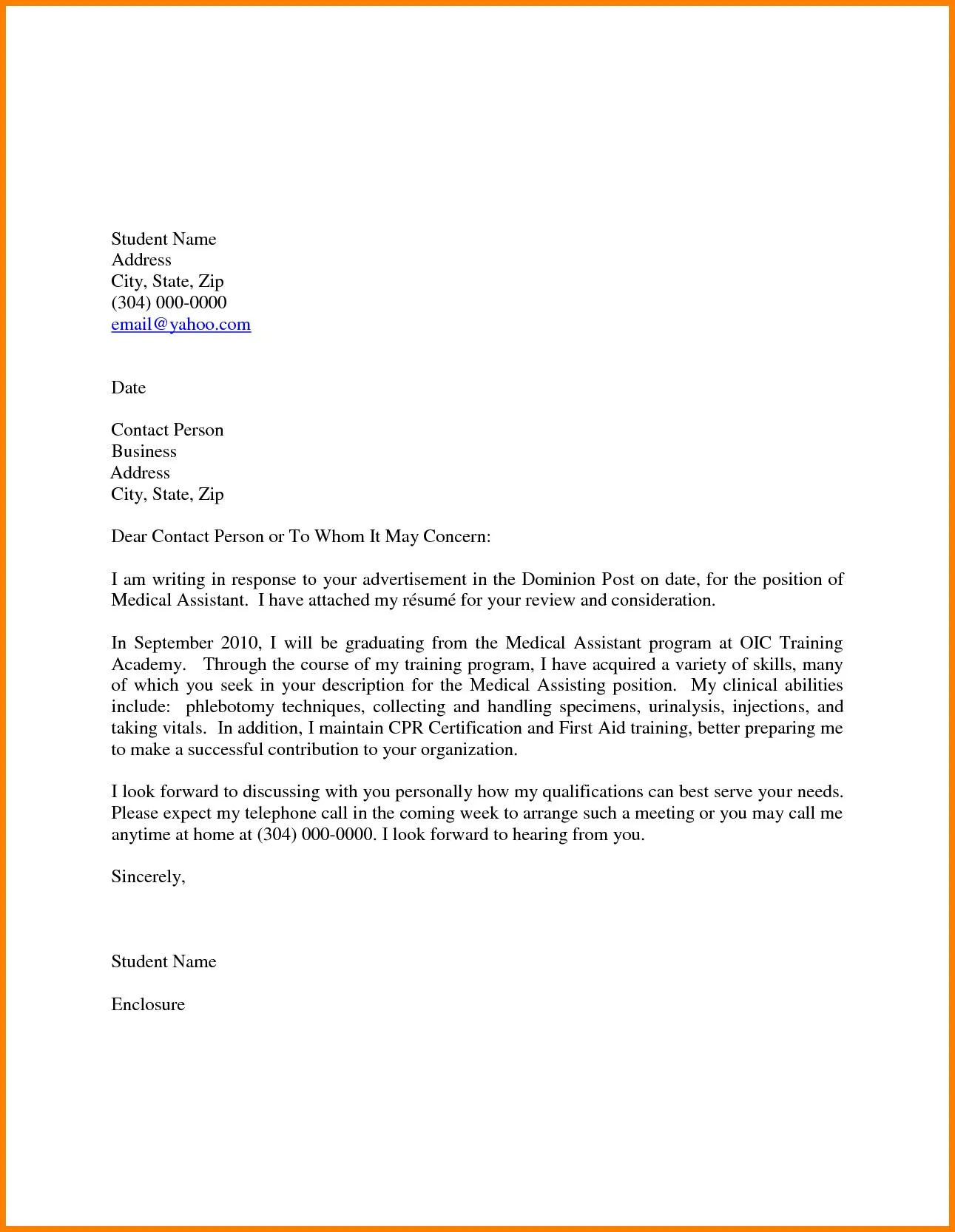
Avoid common mistakes that can hurt your chances. Don’t use generic or template-like language. Tailor each cover letter to the specific job and organization. Avoid simply repeating your resume. Provide more context and highlight your key qualifications. Do not make the cover letter too long. Keep it concise and focused, aiming for one page. Do not include irrelevant information. Focus on the skills and experiences relevant to the job description. Proofread meticulously to avoid errors.
Ensuring Professionalism
Ensure your cover letter maintains a high level of professionalism. Use a professional tone throughout. Use proper grammar, spelling, and punctuation. Maintain a formal but approachable voice. Avoid slang, jargon, and overly casual language. Maintain a positive and enthusiastic attitude. Your cover letter is a reflection of your professional image. Make sure every aspect of the letter demonstrates your seriousness and your ability to communicate effectively.
Medical Cover Letter Samples and Templates
Use medical cover letter samples and templates as a starting point, but always customize them to fit your specific needs. These resources can provide guidance on format, structure, and content, but they shouldn’t be copied verbatim. Research different templates and choose those that best suit your experience and the job you are applying for. Modify the templates to reflect your skills, achievements, and the requirements of the position. This will help your cover letter stand out and demonstrate that you’ve put in the effort to make it unique.
Where to Find Samples
You can find medical cover letter samples on various online resources, including job boards, career websites, and professional organizations’ websites. Look for websites offering templates and examples tailored to healthcare professions. These samples can help you understand how to structure your letter, what content to include, and how to showcase your qualifications. Also, you can consult with career counselors or resume writing services for advice and examples. Ensure that you choose examples that are relevant to your field and level of experience.
Customizing Templates
When using a template, customize it to reflect your unique background and the specific job requirements. Tailor the content to the job description. Highlight skills and experiences relevant to the position. Replace generic phrases with specific examples of your achievements. Show your personality. Ensure the language is consistent with your professional style. Make it specific to you, your skills, and the job you’re applying for. Customizing your template will help make the cover letter uniquely yours and make you stand out.
